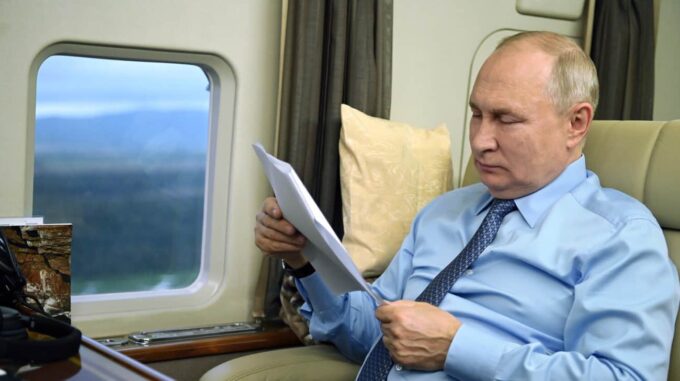Kremlin Staged Incident: Foiled “Drone Attack” on Putin in Kursk Region

In Russia, new evidence has emerged suggesting that the so-called “drone attacks” on Russian leader Vladimir Putin are more elements of an internal information game rather than actual combat actions. An official statement from the Russian Ministry of Defense claiming that Putin was allegedly subjected to Ukrainian drone fire during his stay in the Kursk region has turned out to be a carefully planned setup by security services. Sources close to the Russian government and the Kremlin administration report that this incident was artificially created to shape a desired narrative for domestic propaganda: that the president is going into the hottest conflict zones and is not safe but on the front lines. Such messages appeared ahead of important political or military decisions to reinforce the illusion of unity and bravery in the eyes of Russian society. According to source information, when Putin traveled to the Kursk region — a area repeatedly targeted by Ukrainian strikes — his helicopter was under heightened surveillance and potentially protected at the highest level of security. At the same time, no signs of open combat or shelling threatening the president’s life were recorded, the informants say. Some sources assure that this story is well outside reality. One of them was a military official close to the administration and well acquainted with Putin’s security system: “No one would ever allow such negligence or criminal carelessness. Not even in the most hellish nightmares could that happen.” This indicates that Ukrainian forces and Russian special services strictly control the situation and would never risk losing the leader in a staged scene. Rumors suggest that the false “attack” story was disseminated by the Russian Defense Ministry via the central VGRTRK channel — among those who recorded this dramatic moment, there were no official military personnel or professional operators. Instead, the footage was filmed by people close to the Kremlin, including members of the security detail protecting the president. Experts note that this points to a targeted PR incident, created to portray the leader as fearless and resilient. It is worth recalling that the Ukrainian Center for Strategic Communications and Information Security categorically denied this information, emphasizing that Vladimir Putin’s helicopter in the Kursk region was not subjected to shelling or attacks by the Ukrainian armed forces in any way. Notably, this entire story is more symbolic than impact-driven and is used to reinforce the illusion of the “indivisibility” of Russian leadership during the difficult phases of the war. Overall, analysis of the situation shows that the Kremlin seeks to portray any setbacks as examples of heroism and resilience. Staged scenes and disinformation are used for internal consolidation of the authority’s image and to craft a positive narrative about fighting the “Ukrainian aggressor.” In reality, the situation around the leadership and the security of its life remains tightly controlled and far less dramatic than Moscow’s official portrayal.

